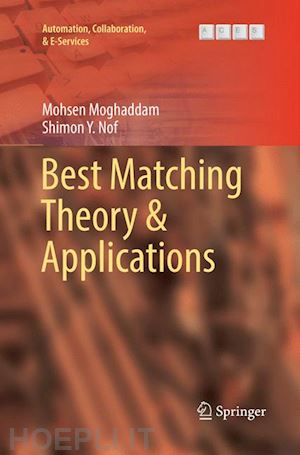
Questo prodotto usufruisce delle SPEDIZIONI GRATIS
selezionando l'opzione Corriere Veloce in fase di ordine.
Pagabile anche con Carta della cultura giovani e del merito, 18App Bonus Cultura e Carta del Docente
Mismatch or best match? This book demonstrates that best matching of individual entities to each other is essential to ensure smooth conduct and successful competitiveness in any distributed system, natural and artificial. Interactions must be optimized through best matching in planning and scheduling, enterprise network design, transportation and construction planning, recruitment, problem solving, selective assembly, team formation, sensor network design, and more. Fundamentals of best matching in distributed and collaborative systems are explained by providing:
§ Methodical analysis of various multidimensional best matching processes
§ Comprehensive taxonomy, comparing different best matching problems and processes
§ Systematic identification of systems’ hierarchy, nature of interactions, and distribution of decision-making and control functions
§ Practical formulation of solutions based on a library of best matching algorithms and protocols, ready for direct applications and apps development.
Designed for both academics and practitioners, oriented to systems engineers and applied operations researchers, diverse types of best matching processes are explained in production, manufacturing, business and service, based on a new reference model developed at Purdue University PRISM Center: “The PRISM Taxonomy of Best Matching”. The book concludes with major challenges and guidelines for future basic and applied research in the area of best matching.











Il sito utilizza cookie ed altri strumenti di tracciamento che raccolgono informazioni dal dispositivo dell’utente. Oltre ai cookie tecnici ed analitici aggregati, strettamente necessari per il funzionamento di questo sito web, previo consenso dell’utente possono essere installati cookie di profilazione e marketing e cookie dei social media. Cliccando su “Accetto tutti i cookie” saranno attivate tutte le categorie di cookie. Per accettare solo deterninate categorie di cookie, cliccare invece su “Impostazioni cookie”. Chiudendo il banner o continuando a navigare saranno installati solo cookie tecnici. Per maggiori dettagli, consultare la Cookie Policy.